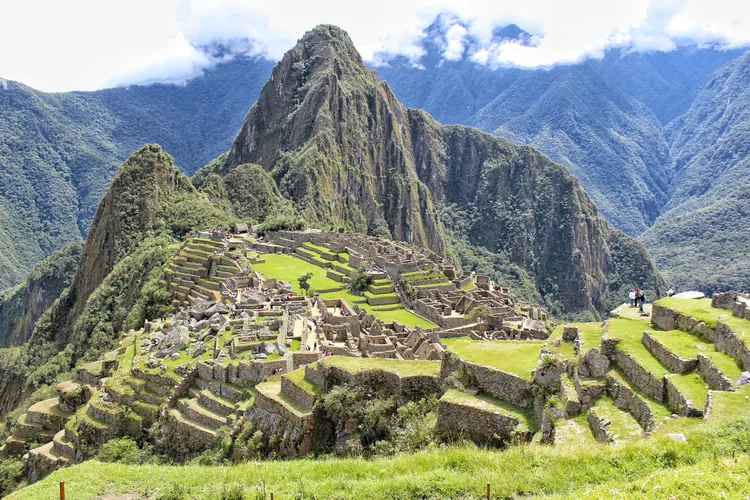1. Introduction
The world is full of wonderful sights and destinations, but some places truly inspire a historical vacation. The Wonders of the World fit this bill, as they leave us marveling at their grandeur.
2. The Wonders of the Ancient and New World
There are many lists of wonders, starting with the Seven Wonders of the Ancient World, compiled by ancient historians. This article combines both ancient and modern wonders.
3. The Wonders Explained
Explore these remarkable sites that are renowned for their historical significance and architectural brilliance. Here are some of the most celebrated wonders:
The Wonders of the Ancient World
1. Colossus of Rhodes
:max_bytes(150000):strip_icc():format(webp)/TAL-colossus-of-rhodes-WORLDWONDERS0523-ffeef585bab24383b517cf5c694f12c9.jpg)
The Colossus of Rhodes was a massive statue built by the Rhodians in Greece between 294 to 282 BCE. The statue was 100 feet high and stood for only 60 years before crumbling in an earthquake.
2. Hanging Gardens of Babylon
:max_bytes(150000):strip_icc():format(webp)/TAL-hanging-gardens-of-babylon-WORLDWONDERS0523-ad8d69e0181643cda02ca14c1e032051.jpg)
The Hanging Gardens of Babylon are shrouded in mystery, with debates over their existence and location. Allegedly located near the Euphrates River, historical accounts are primarily second-hand.
3. Statue of Zeus at Olympia
:max_bytes(150000):strip_icc():format(webp)/TAL-state-of-zeus-WORLDWONDERS0523-d46cebbb9c084e72be9548cfa98c24bd.jpg)
Greek sculptor Phidias created the 40-foot statue of Zeus, which was plated with gold and ivory. The statue was housed in the Temple of Zeus and was lost when the temple was destroyed in 426 CE.
4. Temple of Artemis at Ephesus
:max_bytes(150000):strip_icc():format(webp)/TAL-temple-of-artemis-WORLDWONDERS0523-15724bcfc78a45cab4555ca3c81b1e94.jpg)
The Temple of Artemis in Turkey was an architectural marvel built around 550 BCE and was 350 feet long and 180 feet wide. It was destroyed in 262 CE and never reconstructed.
5. Mausoleum at Halicarnassus
:max_bytes(150000):strip_icc():format(webp)/TAL-mausoleum-at-halicaranassus-WORLDWONDERS0523-4942343396b24eac8b9f787d888bc8af.jpg)
The Mausoleum at Halicarnassus was built in 353 BCE and is characterized by its square structure and 36 columns topped with a pyramid. It was likely destroyed in a 13th-century earthquake.
6. The Lighthouse of Alexandria
:max_bytes(150000):strip_icc():format(webp)/TAL-lighthouse-of-alexandria-WORLDWONDERS0523-4ddc306b0a04478086c36c78f1b570cc.jpg)
Built around 280 BCE by Sostratus of Cnidus, the Lighthouse of Alexandria stood at 350 feet high on the island of Pharos and served as a prototype for modern lighthouses.
7. Great Pyramid of Giza
:max_bytes(150000):strip_icc():format(webp)/TAL-pyramids-of-giza-WORLDWONDERS0523-b65a73e6a2f64f77972033f95f8e6a16.jpg)
The Great Pyramid of Giza is the last remaining wonder of the ancient world, made of over two million stones. Its construction methods remain a mystery.
The New Wonders of the World
1. The Colosseum
:max_bytes(150000):strip_icc():format(webp)/TAL-colosseum-WORLDWONDERS0523-74ede1158daf493f97aa2a8c8474f9cf.jpg)
The Colosseum in Rome, built in the first century, is a vast arena that held upwards of 50,000 spectators for various events, including gladiator battles.
2. The Great Wall of China
:max_bytes(150000):strip_icc():format(webp)/TAL-great-wall-of-china-WORLDWONDERS0523-5f28e953141c45ea94fd59e1d28b3327.jpg)
The Great Wall of China extends over 13,000 miles and attracts millions of visitors annually, originally built for protection against invasions.
3. The Taj Mahal
:max_bytes(150000):strip_icc():format(webp)/TAL-taj-mahal-WORLDWONDERSGHOG0523-71562e12d7ac45eea04cc4a76b701275.jpg)
The Taj Mahal, built by Mughal Emperor Shah Jahan, is an exquisite mausoleum dedicated to his wife, completed in 1648.
4. Christ the Redeemer
:max_bytes(150000):strip_icc():format(webp)/TAL-christ-the-redeemer-WORLDWONDERS0523-4b46983f52204dc692a3a24ccee7d983.jpg)
Located in Rio de Janeiro, Christ the Redeemer is a 98-foot tall statue symbolizing peace and welcoming visitors to Brazil.
5. Machu Picchu
Aristides Vieira/EyeEm/Getty Images
Machu Picchu is an ancient Incan city constructed around 1450 BCE, now a UNESCO World Heritage Site, attracting countless visitors each year.
6. Chichén Itzá
:max_bytes(150000):strip_icc():format(webp)/TAL-chichen-itza-WORLDWONDERS0523-32d8041b43214e5a85284d9e2de2b54b.jpg)
Chichén Itzá, an ancient Mayan city, features impressive pyramids and historical structures reflective of Mayan culture and commerce.
7. Petra
:max_bytes(150000):strip_icc():format(webp)/TAL-petra-WORLDWONDERS0523-12ee0bb6870f486dae8d3c041e6e2426.jpg)
Petra in Jordan, known for its intricately carved rock structures, represents an extraordinary achievement in engineering and architecture.




